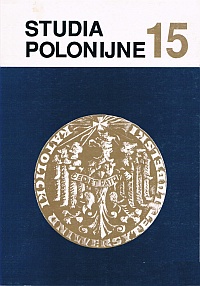The Statistical Image of Poles and Polonia in Austria in the 19th and the 20th Century Until 1990
Main Article Content
Abstract
The process of forming numerous Polish centres on the territory of aboriginal Austria was commenced in the 1820s. The most intense migrational movements from the Polish territories to Austria occurred in the years 1890-1914. Lower Austria is a visible sign of those movements. The period of the First World War marks out a separate page in the history of Poles and Polonia in Austria. The offensive of the Russian army caused a sudden influx of refugees from Galicia and Bukovina into the Austria-Hungary monarchy. At the beginning of the war there were 640 000 refugees, the number includes 200 000 in Vienna and its surroundings. The moment Hitler cam to power Austrian nazists intensified their hostile activity against Poles and Jews who, being afraid of their lives, fled the State upon the Danube. If in Lower Austria in the 20s there lived over 40 000 Poles, then ten years later there were as few as 25 000 people.
At the moment of Germany’s surrender (May 1945) on the territory of Austria there were ca 80 000 Polish people. They were mainly workers from forced labour camps in Reich and former prisoners of the hitler’s concentration camps. In 1980 in 9 national components of Austria the Polonia milieus numbered ca 10 500.
A new chapter in the history of Polonia and Poles in Austria was initiated in the 1980s. Only in 1984 there arrived 29 901 Poles in Austria out of which group the majority took steps to gain the status of political refugee.
In 1990 in Austria lived ca 20 000 people who were aware of their Polish origin, but did not have any relation with Polish cultural heritage nor could they speak Polish. These were the people mainly from Polish families settled in aboriginal Austria during the Habsburgs monarchy as well as descendants of the refugees from the period of the First World War and emigrants from the years 1918-1939.

